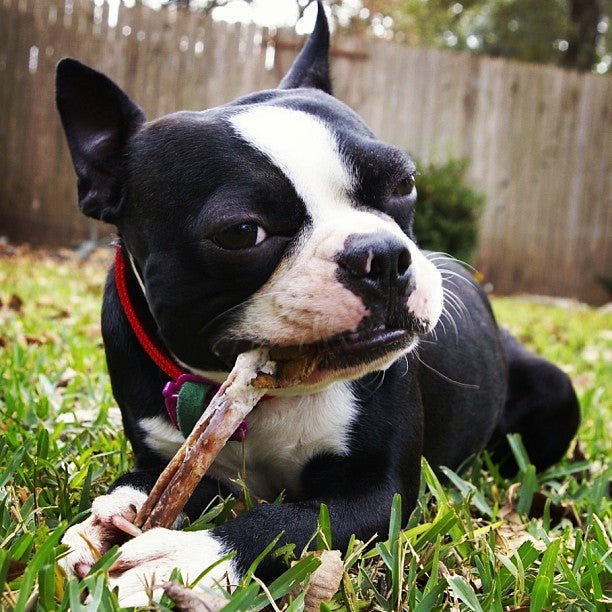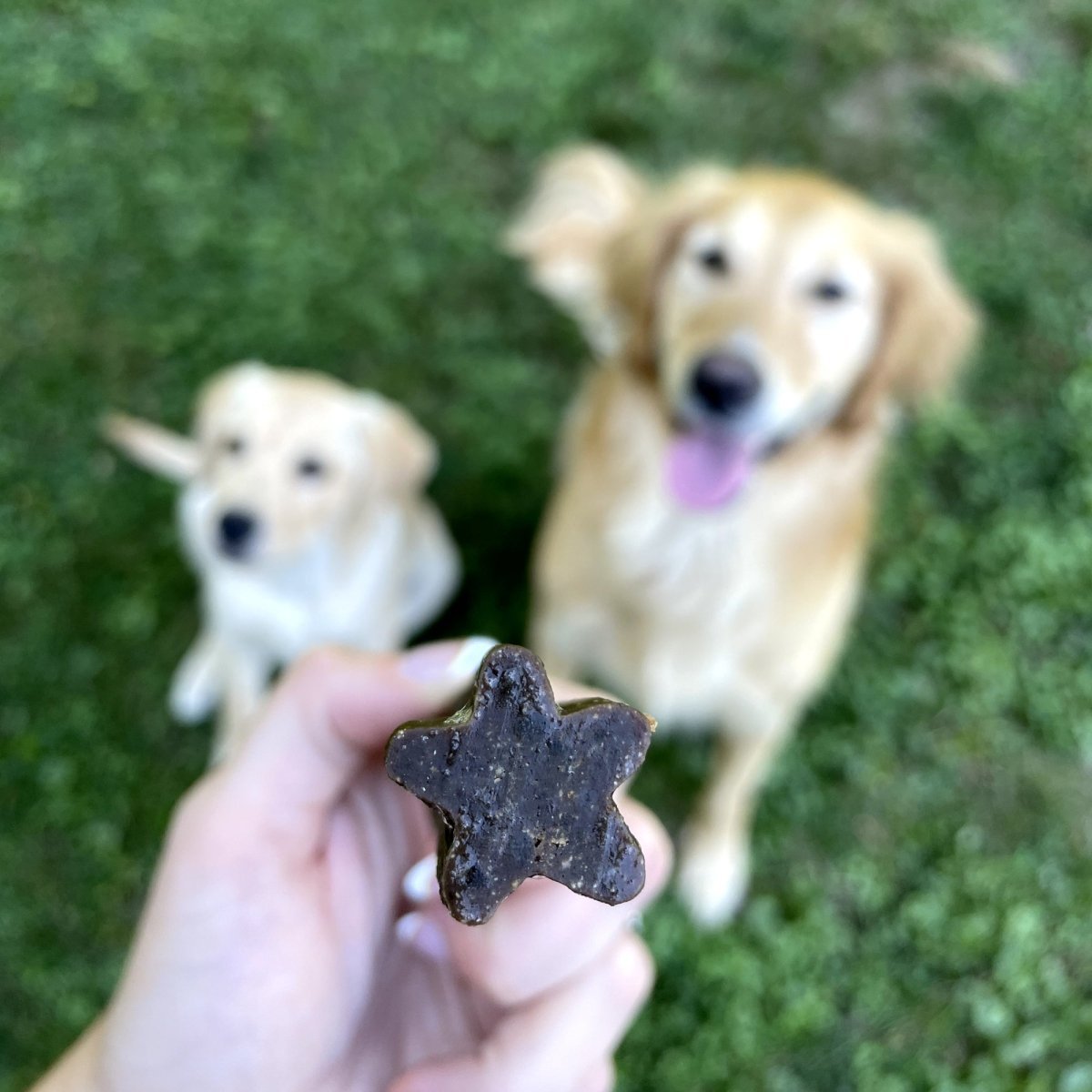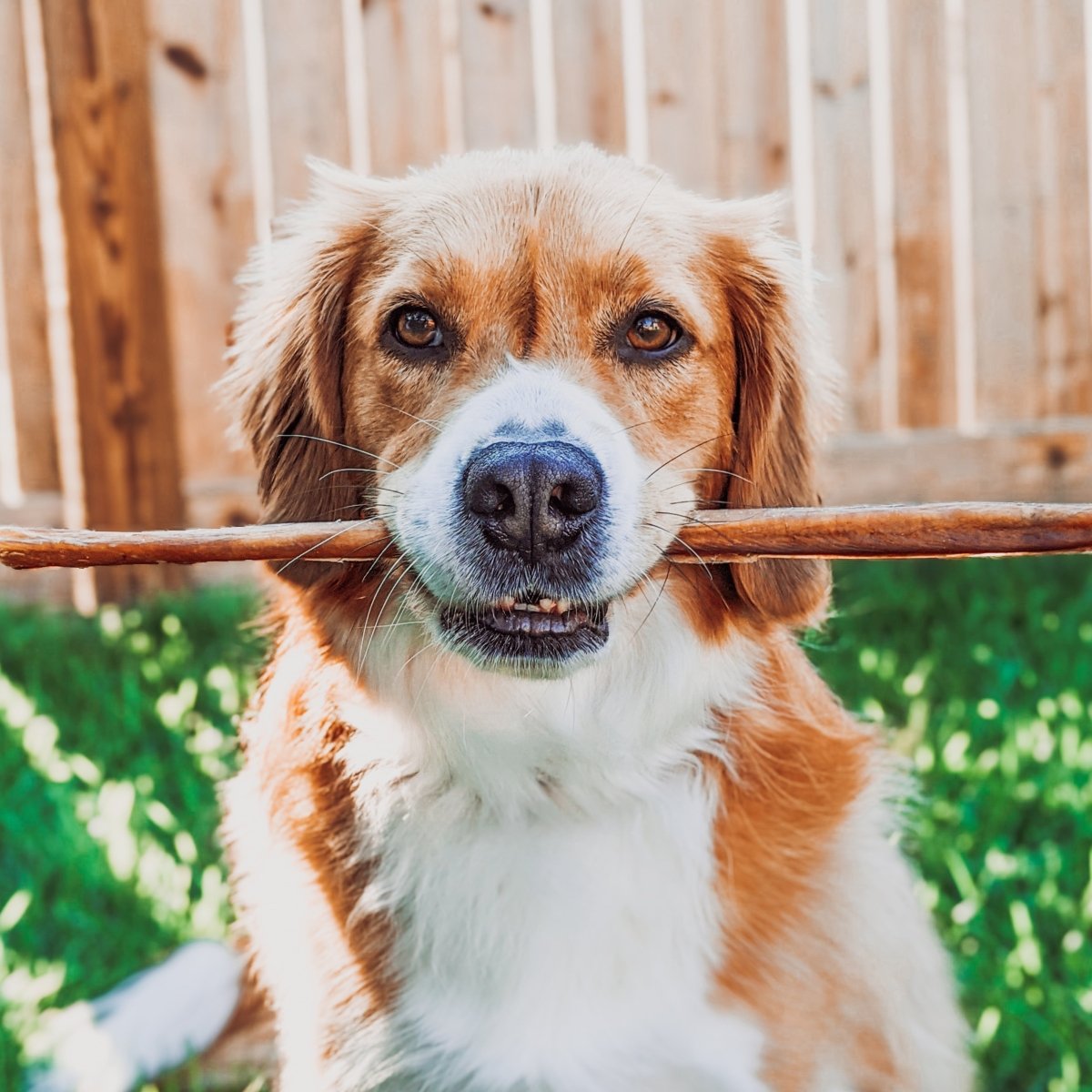
It's natural and instinctive for dogs to chew; chewing helps strengthen dogs' jaws. Chewing on hard objects helps scrape away tartar and plaque from dogs' teeth, keeping their teeth and gums clean. A cleaner mouth promotes better overall health in the animal and helps control "doggy breath."
Chewing can help relieve boredom and stress in dogs. But there is at least one very major drawback to dog's chewing: many, if not most, dogs are rather indiscriminate chewers.
Rather than let them chew on shoes and furniture, dog owners have used chew toys and bones as an alternative. The first rawhide bones and chews were introduced in the late 1950s. Rawhide was similar to leather, and dogs love to chew on leather. This relatively inexpensive treat would keep your dog away from more valuable chewing choices. Plus, these chews came in all sorts of shapes and sizes. What better way to redirect the teeth of destruction that masqueraded as your dog?
But is rawhide really the great choice we thought it was? Perhaps not.
Let's examine rawhide more closely. Rawhide comes from the hide of animals. The hide generally comes from hoofed animals like cows, horses, and water buffalo.
Animal hide has layers, as does human skin, although the layers of our skin are much thinner. The outermost layer of hide is removed and used for leather goods: shoes, accessories, garments, upholstery, etc. The inner layer is stripped of the fat, muscle, and hair. This is the layer that becomes your dog's rawhide chew toy.
That doesn't sound too bad, though, does it? The hide shouldn't be that bad for dogs. Anyone who's had a dog who snacks in the cat's litter-box or the backyard can certainly think of worse things for a dog to chew on.
But there's more to it than that. And that's where the dangers of rawhide begin.
The hide needs to be sent to a processing plant, typically a tannery, to be split and cleaned. Within the United States, these hides are transported in refrigerated trucks to prevent spoilage. But that's not always the case in other countries. Sometimes these hides are transported for miles over many days in closed, hot vehicles. The hides can begin to decay and rot and sometimes arrive at their destinations in a somewhat putrid condition. These hides are then bleached and/or treated with other chemicals to get rid of the dark color and acrid odor.
As an alternative to refrigeration, sometimes the skins are treated with chemicals prior to transportation to help prevent, or at least delay, the decay. Unfortunately, those chemicals can be very dangerous for your dog to ingest and are not approved forrawhide production in the United States. According to the FDA, some products have had to be recalled due to causing gastric irritation, diarrhea, and vomiting.
Even under the best of circumstances, the cleaning process itself can include the use of lye or bleach. Hydrogen peroxide is commonly used to clean the hides. Some countries use arsenic and/or formaldehyde, although the use of these chemicals is banned in the United States. The hides are then dried and cut and formed into different shapes to make your dog's chews. Since the hide is never cooked, it remains "raw": hence the name rawhide.
Although many dog chews are labeled as "treats," they are not considered a food by the FDA, so there are no regulations concerning the ingredients or the processing procedures. There isn't even a requirement that the ingredients be listed. There's no way for a consumer to tell what chemicals were used in the processing. There's not even a way for the consumer to know for sure what animal (or animals) originally provided the hide.
One of the safest options is to get rawhide manufactured in the United States. However, this can be hard to ascertain since the country of origin may or may not be shown on the packaging. Even if a country is listed, the consumer needs to be aware. A label may give a false impression (for example, "made for USA" not "made in USA" or "made in the Americas" -- which could indicate it was processed in South America).
In addition, since the hides comes from animals, there is a chance the treats made from them can be tainted with E-coli or salmonella bacteria. If these bacteria are present, they can infect human family members when they handle the treats, as well as the pets when they chew on the rawhide.
Even disregarding the possibility of chemical or biological contamination, there are other dangers inherent in rawhide. Rawhide starts out extremely hard due to the dried collagen that exists in the hide. As the dog chews, the combination of the dog's saliva and the chewing action softens the rawhide. Eventually it will soften to the point the dog can bite a piece off and swallow it. Sometimes pieces get caught in the dog's teeth, and will require your help or your vet's help to get it dislodged.
Another problem is that sometimes the dog tries to swallow a piecethat is too large. This can cause the dog to choke. Or worse yet, the piece can get caught in the trachea. This could require a vet's intervention to remove it. If the trachea is blocked for too long, this can put the dog's life in danger.
Even pieces that pass through the throat can still lodge in the intestines causing a blockage that could require surgery to repair. Sometimes even a small piece of rawhide can continue to swell after it's swallowed causing blockages further down in the intestinal tract. This can create potential problems as the dog tries to pass the piece, can cause a blockage requiring surgery or, sadly, can even result in death.
Some rawhide treats can splinter like real bones sometimes do. The resulting sharp shards can cause the same injuries to the mouth, tongue and gums as natural bone pieces can, or they can cut the trachea. They can even puncture the intestines or internal organs.
Allergies are another potential problem. Not all dogs can tolerate rawhide and/or the various other substances involved in rawhide manufacturing. Allergic dogs can suffer from nausea, vomiting, or diarrhea. If your dog exhibits any of those systems, consult your vet. Your vet may need to see the dog to verify it's simply an allergic reaction and not something more serious.
Some other signs to watch for include constant swallowing, lack of energy, a fever, lack of appetite, and/or weight loss. Contact your vet if you notice any of these symptoms and be sure to let your vet know your dog has been eating rawhide so any possible complications can be considered.
Some rawhide manufacturers add flavoring to their rawhide bones to make them more enticing for dogs. Whereas the flavorings themselves are not necessarily dangerous to dogs as a whole, your dog may be sensitive to them. The flavoring substances can also stain furniture, clothing, carpeting, etc.
Plain rawhide chews can discolor fabric and carpeting, too. They also often leave a sticky residue that is very hard to get out of carpet.
Millions, if not billions, of rawhide chew toys have been sold in the United States since their introduction to the consumer market in the 1950's. Many dogs have chewed on rawhide with no ill effects. But with all the other choices out there that don't carry all these risks, do you really want to take the chance?
Luckily, there are many other types of chews that are safe for your dog to enjoy. Want to learn more pet health tips? Check out our blog.
Comments will be approved before showing up.

Dental chews keep plaque in check and gums strong. Read here to learn about nature's toothbrush!

Single-ingredient dog chews and treats are crafted using only one whole food source!

Check out our guide on different types of chews to help you decide on the best chew for your dog!